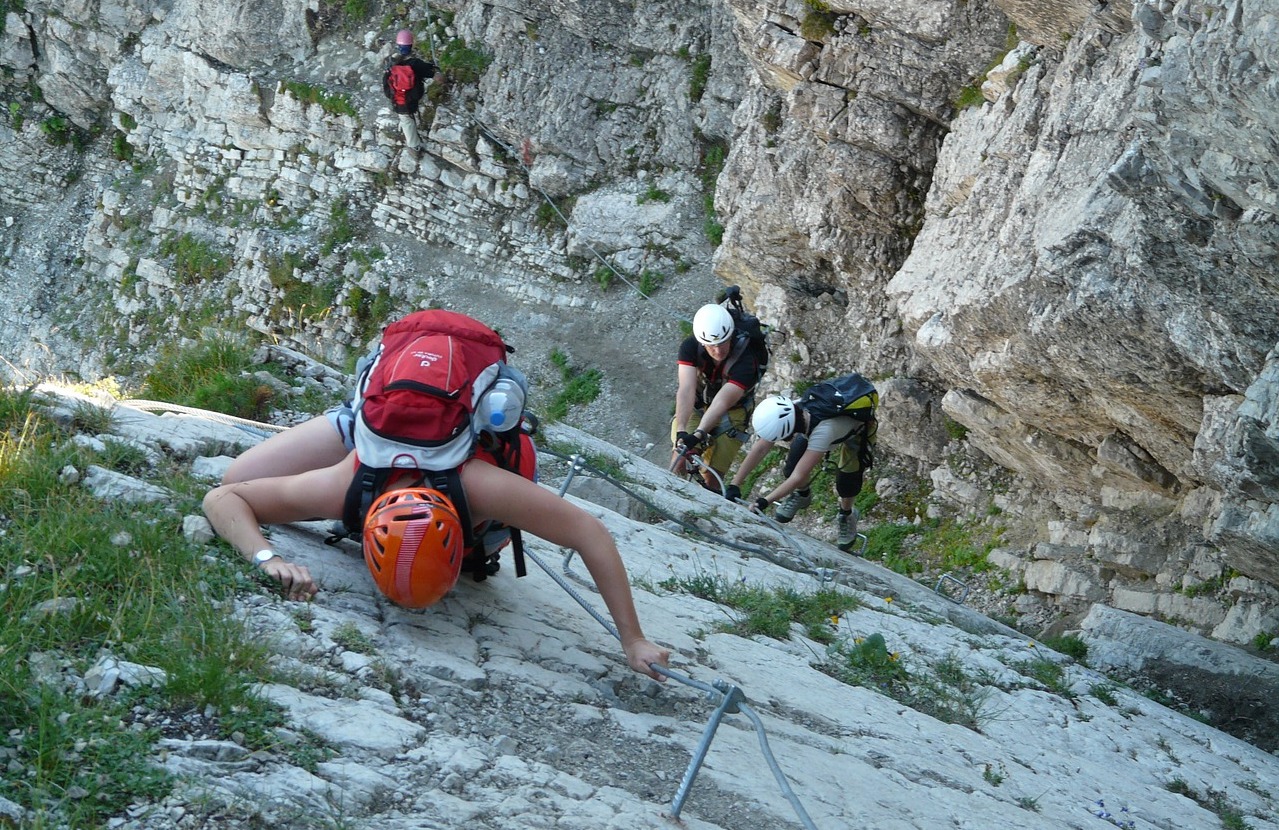If you’re a shorter-than-average rock climber or you have a negative ape index – or both – you can develop some specific climbing techniques and strengths to compensate for your relative lack of reach. In this article, discover how to stop getting held up by reachy moves (at least most of the time) by lengthening and strengthening your wingspan.
The Climbing Drop-Knee
The climbing technique known as a drop-knee takes the climbing back-step to a different level. In this move, a climber places her foot on a foothold out to the same side as that foot, often high up. This means that if the left leg is going to drop knee, the climber places her left foot out to her left, with her right foot usually either under her or off to her right side.
The climber then swivels that left foot into a backstepping position, effectively dropping her left knee downward. This climbing move, called a drop-knee, results in an extended ability to reach with the climber’s left arm (see photo). Be aware that the climbing drop-knee puts a lot of stress on the knee, and it can potentially result in injury. Stretch frequently and use drop-knees sparingly to help mitigate this potential.
Look Down to Lengthen Reach
The subtle climbing technique of looking down at the last second before reaching for a hand hold can help shorter rock climbers gain that last little bit of necessary stretch to make contact. To perform this climbing move, when reaching high for a hold with a hand, pull down and in with the other hand, also swiveling the body as much as possible in the direction of the hold you’re trying to reach.
When you’re almost to the hold in question, keep a visual in your mind as to where the hold is, and turn your head in the same direction you’ve turned your body, looking down and away from the hold while you reach the final few centimeters to make contact. This subtle adjustment in body position can gain you the critical amount of reach necessary to get to the next handhold.
Building Climbing Lock-Off Strength
Shorter climbers must be able to take climbing holds and push them down far below their waists in order to make many reachy climbing moves. This requires training for stronger lock-off ability, including locking off above the waist, like at the top of a pull-up, as well as locking off below the waist. To do this, add specific lock-off exercises to your climbing training program that address locking off below the waist.
Get Longer and Stronger for Rock Climbing
Instead of viewing short stature or wingspan as a ready-made excuse for not being able to perform certain climbing moves, aim to make your height and reach your allies to the best of your ability. Hone specific climbing techniques that can compensate for reach issues, such as the drop-knee and looking down. In addition, add lock-off training both above and below the waist to your climbing training program.
